Discover 9 hidden attractions, cool sights, and unusual things to do in Dixon (United States). Don't miss out on these must-see attractions: Ronald Reagan Boyhood Home, John Deere House and Shop, and Lowell Park. Also, be sure to include The Next Picture Show in your itinerary.
Below, you can find the list of the most amazing places you should visit in Dixon (Illinois).
Table of Contents
Ronald Reagan Boyhood Home
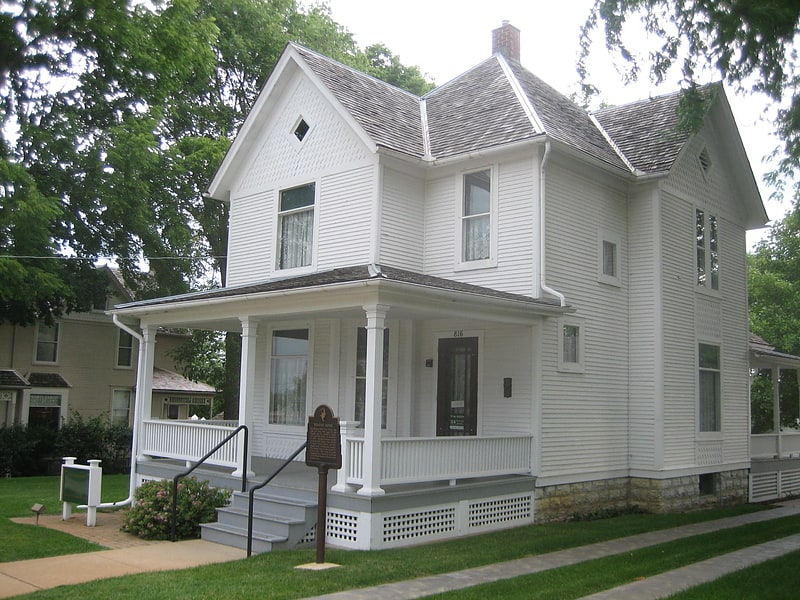
The Ronald Reagan Boyhood Home is the house located at 816 S. Hennepin Ave. Dixon, Illinois, in which the 40th President of the United States Ronald Reagan lived as a youth beginning in 1920. The building was listed on the National Register of Historic Places in 1982. The home is open to visitors from April to October.[1]
Address: 816 S Hennepin Ave, 61021-3646 Dixon
John Deere House and Shop
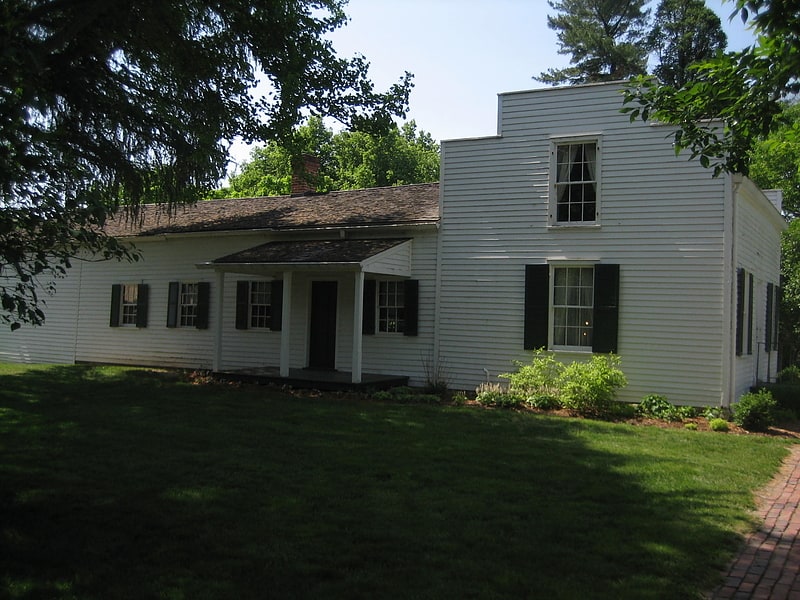
The John Deere House and Shop is located in the unincorporated village of Grand Detour, Illinois, near the Lee County city of Dixon. The site is known as the location where the first steel plow was invented by John Deere in 1837. The site includes Deere's house, a replica of his original blacksmith shop, a gift shop, and an archaeological exhibit showing the excavation site of his original blacksmith shop. The Deere House and Shop is listed on the National Register of Historic Places; it joined that list in 1966, the year the Register was established. Prior to that, it was designated a National Historic Landmark on July 19, 1964.[2]
Lowell Park

Park in Lee County, Illinois. Lowell Park is a municipal park located along the Rock River in northern Dixon, Illinois. The city acquired the land for the park in 1906, when Carlotta Lowell donated the land to commemorate her parents' lives. Lowell recruited the Olmsted Brothers, a nationally prominent architecture firm formed by the sons of Frederick Law Olmsted, to provide a design for the park; their design emphasized the park's natural scenery by ensuring that its manmade features complemented rather than distracted from it. The park opened to the public in 1907, though its original plan was not fully completed until 1942. It served as a forerunner to state parks, and according to the Dixon Evening Telegraph, it remained the only park of its kind in the region as late as the 1930s. In addition, the park preserves one of the few remaining segments of the Boles Trail, which ran from Peoria to Galena.
The park was added to the National Register of Historic Places on August 8, 2006.[3]
The Next Picture Show
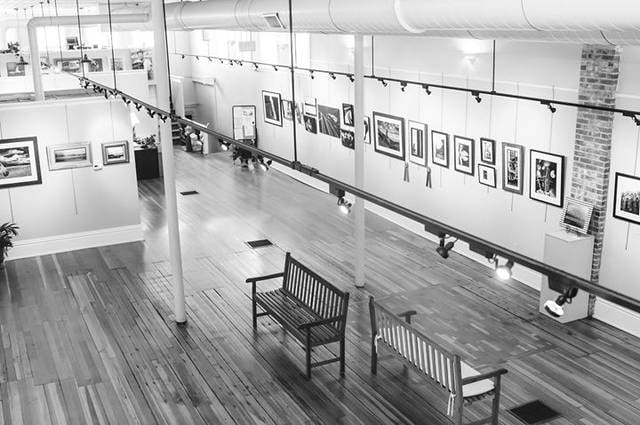
Museum, Art gallery
Address: 113 W 1st St, 61021-3025 Dixon
Loveland Community House & Museum
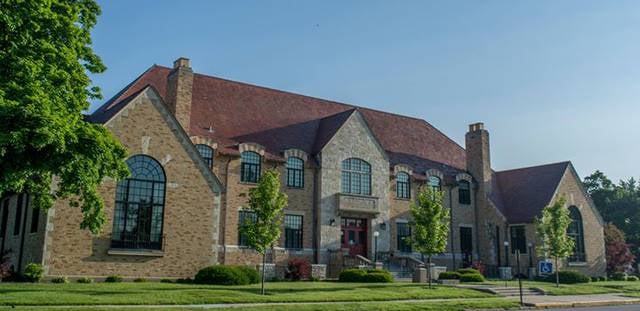
Specialty museum, Museum, Performing arts
Address: 513 W 2nd St, 61021-2960 Dixon
Illinois Central Stone Arch Railroad Bridges

Deck arch bridge in Dixon, Illinois. The Illinois Central Stone Arch Railroad Bridges are a trio of limestone railroad bridges in the city of Dixon, Illinois, United States. The bridges were constructed between 1852 and 1855 as the Illinois Central Railroad laid its first rail lines across the state of Illinois. They were designed by Robert F. Laing for Laing and Douglas Construction Company, a railroad company contractor during the 1850s. Though each limestone bridge is similar in design, they each have different clearances ranging between 12 and 15 feet. The bridges remained in use by the railroad until 1985, and the three bridges were added to the U.S. National Register of Historic Places in 1987.[4]
Christopher Brookner House
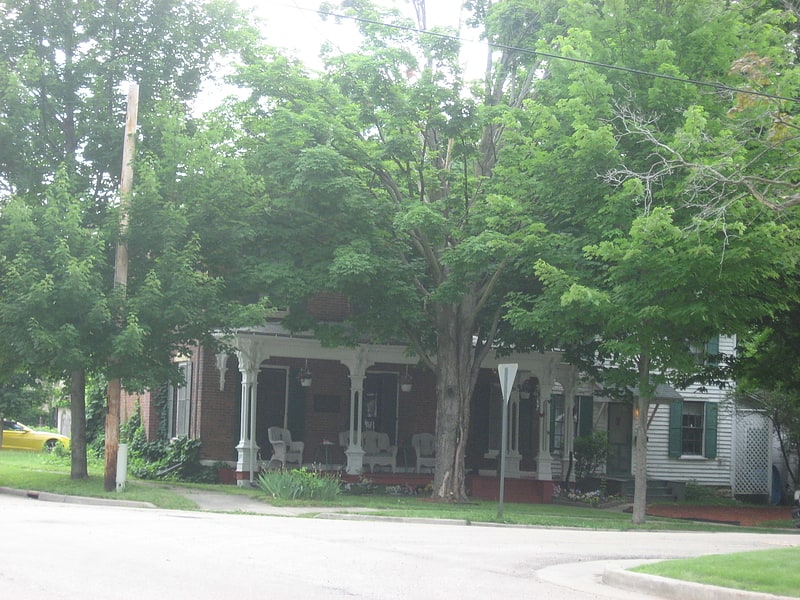
The Christopher Brookner House is a historic house located at 222 North Dixon Avenue in Dixon, Illinois. Original owner Christopher Brookner, a carpenter and early Dixon resident, built the house in 1861 or 1862. The house's design is primarily Italianate, which is reflected in its front porch, tall windows, bracketed cornice, and hipped roof. The Federal style can also be seen in the house, particularly in its window treatments and its simple brick exterior. The main entrance to the house has a Greek Revival design, adding a third style to the house's architecture.
The house was added to the National Register of Historic Places on November 13, 1984.[5]
Dixon Downtown Historic District
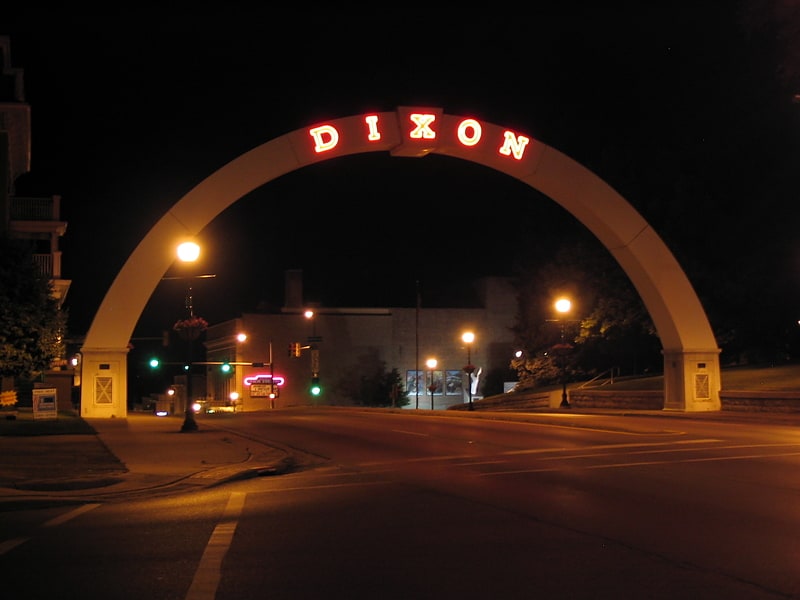
The Dixon Downtown Historic District is a historic district which encompasses 154 properties in downtown Dixon, Illinois. The district includes the city's commercial core, which includes buildings dating back to the 1850s. Dixon's commercial buildings are largely two-story brick structures and reflect the popular architectural styles of their era of construction; the Italianate style is most common in 19th-century buildings, while the Commercial style and revival styles such as Neoclassical and Beaux-Arts became popular after 1900. Many of Dixon's prominent government and community buildings also lie within the district, including the Lee County Courthouse, City Hall, its current and former post offices, and several churches. A residential section on the west side of the district includes Queen Anne and Craftsman style homes; the former style was popular in the late 19th century, while the latter was popular in the early 20th.
The district was added to the National Register of Historic Places on March 7, 2012.[6]
William H. Van Epps House
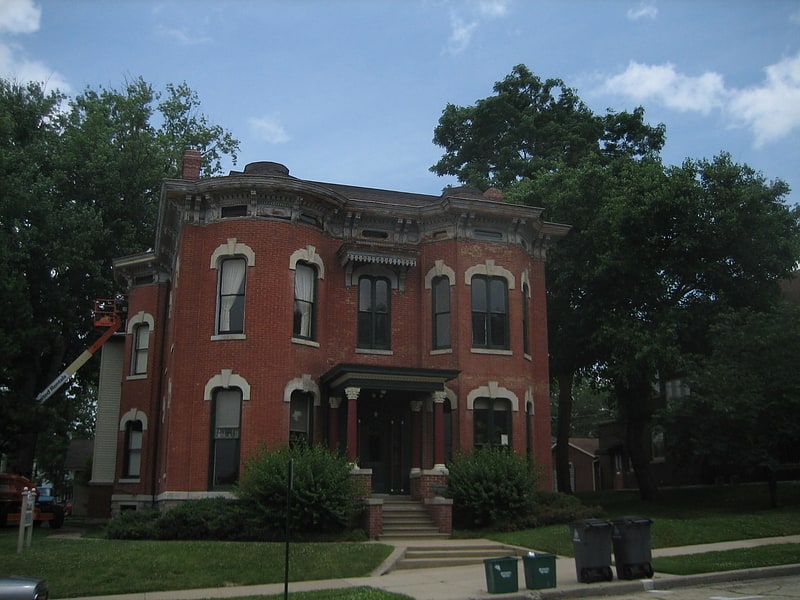
The William H. Van Epps House is a historic house in Dixon, Illinois. It is an example of Italianate architecture. and was constructed around 1855. The Van Epps House was added to the U.S. National Register of Historic Places in 1982.[7]